Linear Temporal Logic
�
Safety vs. Liveness
• Safety : something bad never happens
A counterexample is an finite execution leading to something bad
happening (e.g. an assertion violation).
• Liveness : something good eventually happens
A counterexample is an infinite execution on which nothing good
happens (e.g. the program does not terminate).
�
Verification of Reactive Systems
• Classical verification `a la Floyd-Hoare considered three problems:
– Partial Correctness :
{ϕ} P {ψ} iff for any s |= ϕ, if P terminates on s, then P (s) |= ψ
– Total Correctness :
{ϕ} P {ψ} iff for any s |= ϕ, P terminates on s and P (s) |= ψ
– Termination :
P terminates on s
• Need to reason about infinite computations :
– systems that are in continuous interaction with their environment
– servers, control systems, etc.
– e.g. “every request is eventually answered”
�
Reasoning about infinite sequences of states
• Linear Temporal Logic is interpreted on infinite sequences of states
• Each state in the sequence gives an interpretation to the atomic
propositions
• Temporal operators indicate in which states a formula should be
interpreted
Example 1 Consider the sequence of states:
{p, q} {¬p, ¬q} ({¬p, q} {p, q})ω
Starting from position 2, q holds forever. 2
�
Kripke Structures
Let P = {p, q, r, . . .} be a finite alphabet of atomic propositions.
A Kripke structure is a tuple K = hS, s0, −→, Li where:
• S is a set of states,
• s0 ∈ S a designated initial state,
• −→ : S × S is a transition relation,
• L : S → 2P is a labeling function.
�
Paths in Kripke Structures
A path in K is an infinite sequence π : s0, s1, s2 . . . such that, for all
i ≥ 0, we have si −→ si+1.
By π(i) we denote the i-th state on the path.
By πi we denote the suffix si, si+1, si+2 . . ..
inf(π) = {s ∈ S | s appears infinitely often on π}
If S is finite and π is infinite, then inf(π) 6= ∅.
�
Linear Temporal Logic: Syntax
The alphabet of LTL is composed of:
• atomic proposition symbols p, q, r, . . .,
• boolean connectives ¬, ∨, ∧, →, ↔,
• temporal connectives , 2, 3, U , R.
The set of LTL formulae is defined inductively, as follows:
• any atomic proposition is a formula,
• if ϕ and ψ are formulae, then ¬ϕ and ϕ • ψ, for • ∈ {∨, ∧, →, ↔} are
also formulae.
• if ϕ and ψ are formulae, then ϕ, 2ϕ, 3ϕ, ϕU ψ and ϕRψ are
formulae,
• nothing else is a formula.
�
Temporal Operators
• is read at the next time (in the next state)
• 2 is read always in the future (in all future states)
• 3 is read eventually (in some future state)
• U is read until
• R is read releases
�
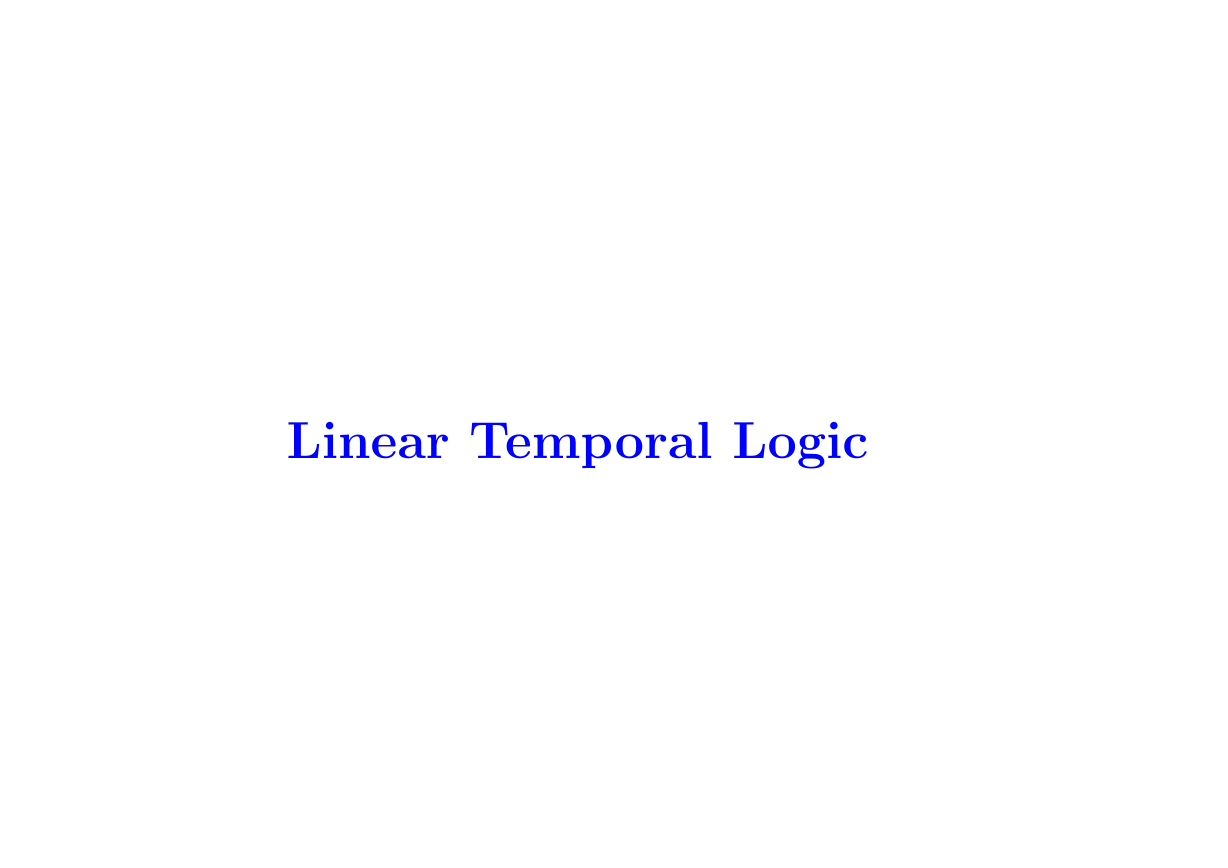
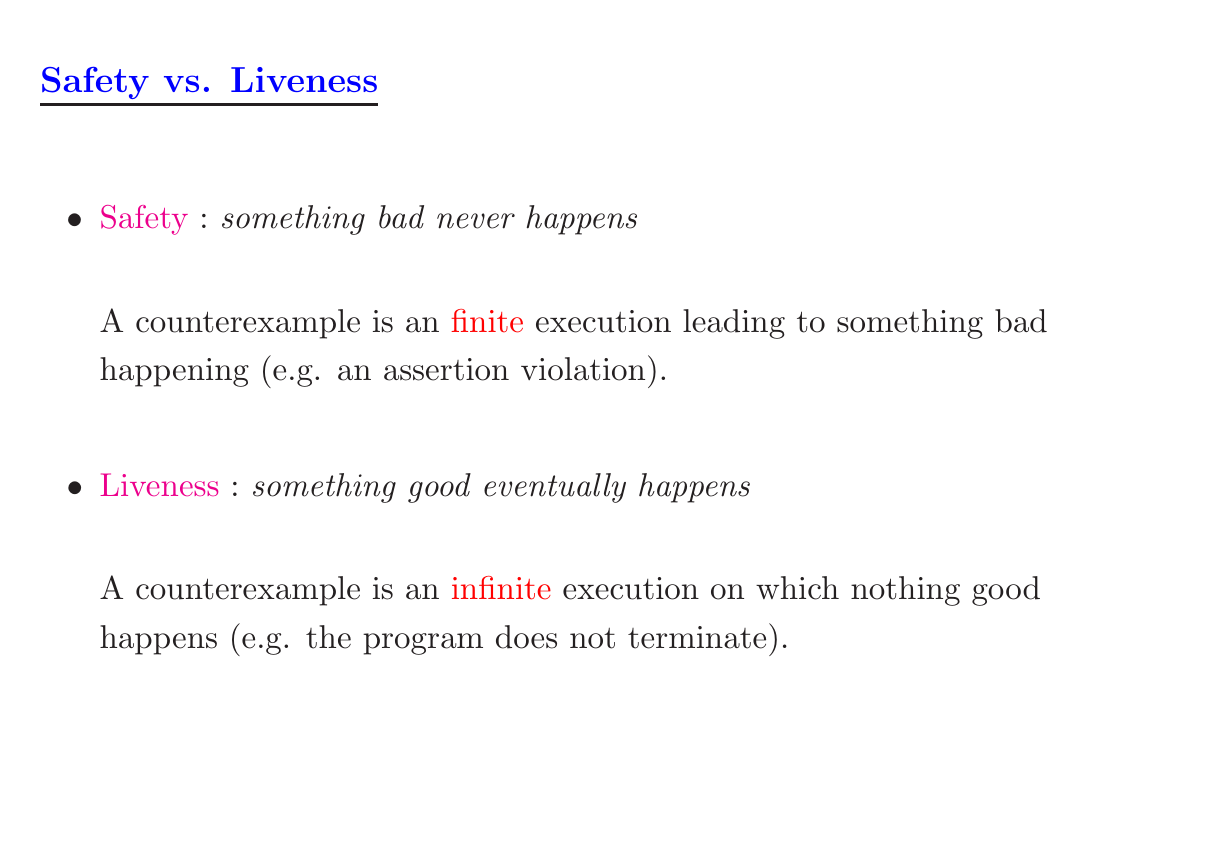
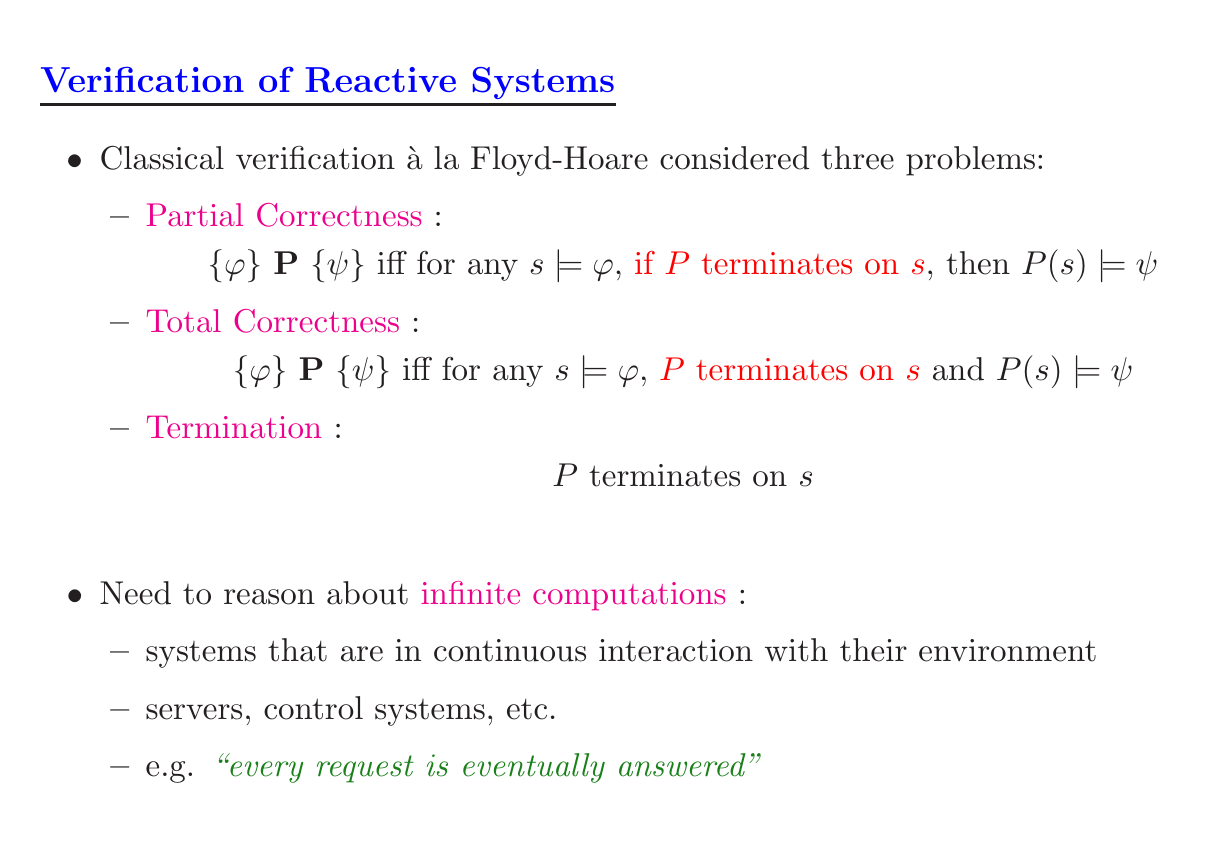
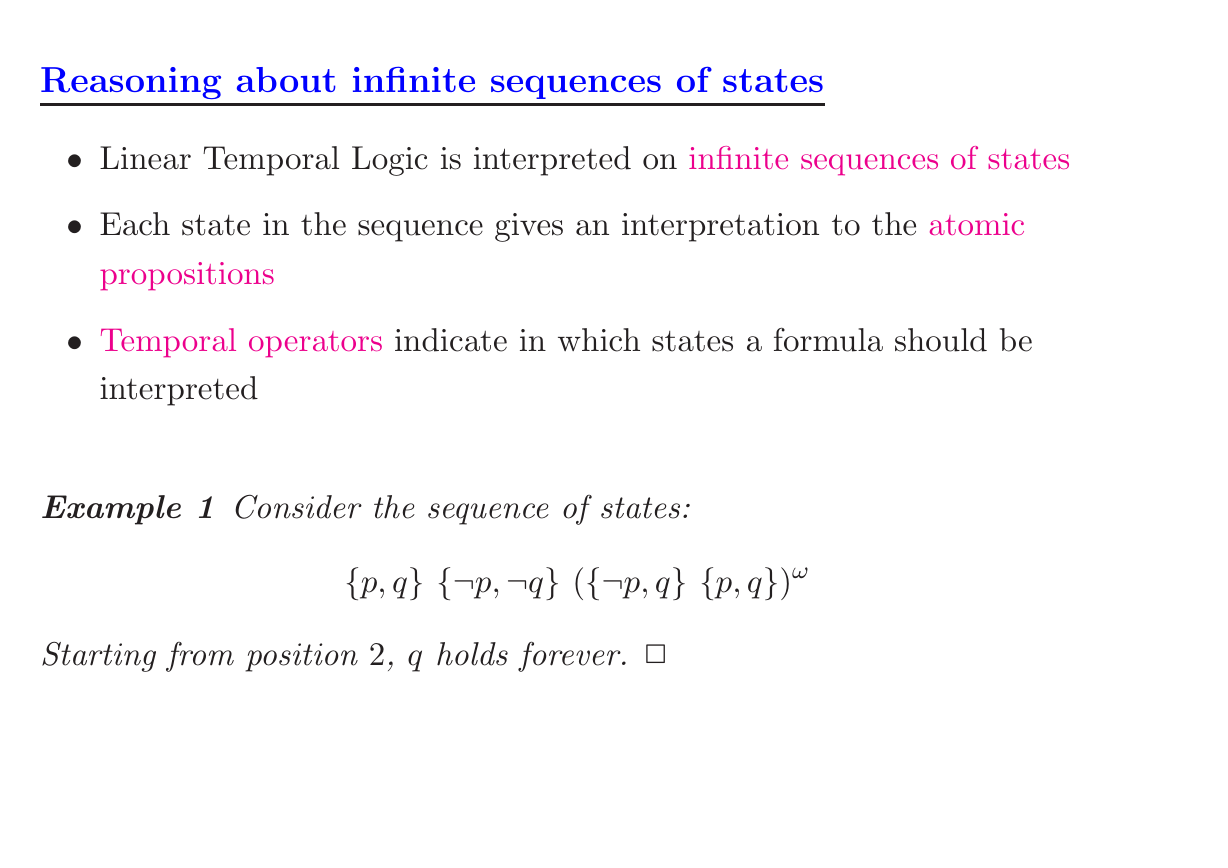
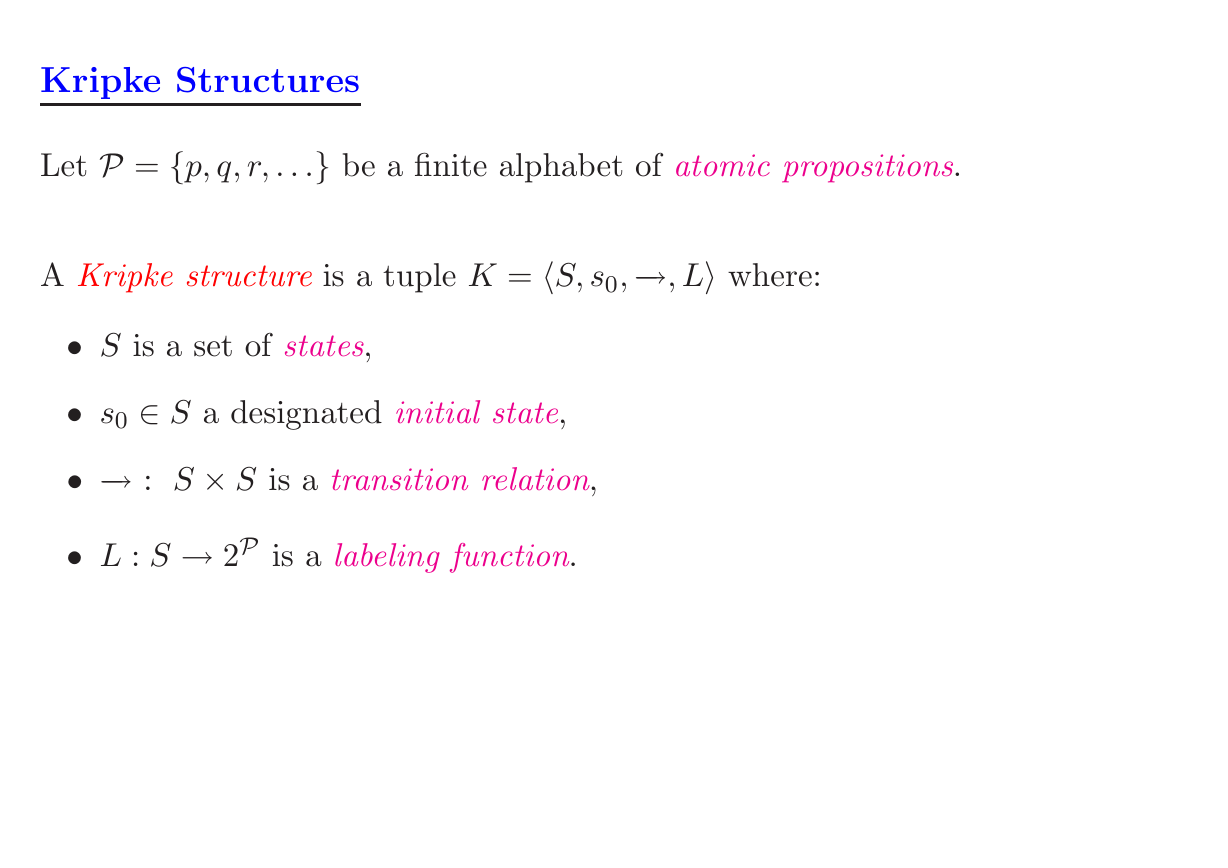

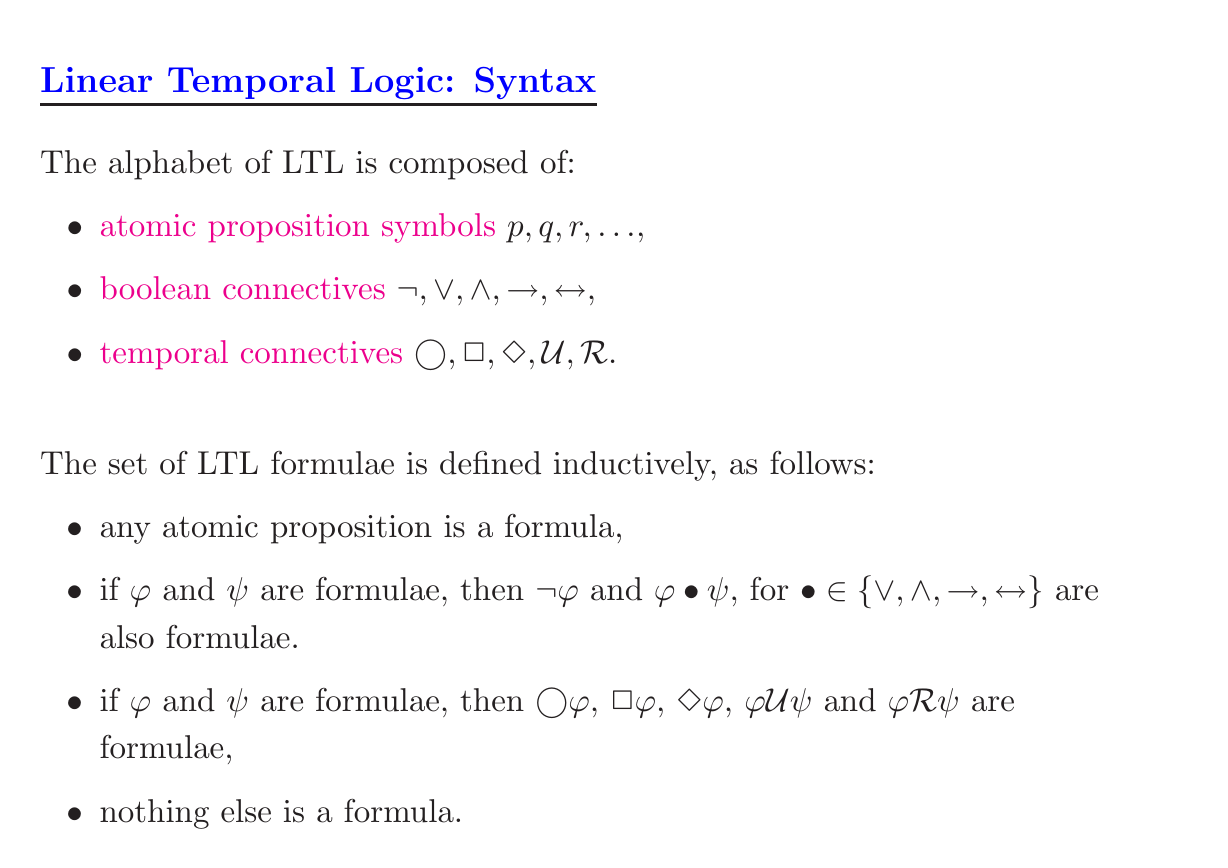
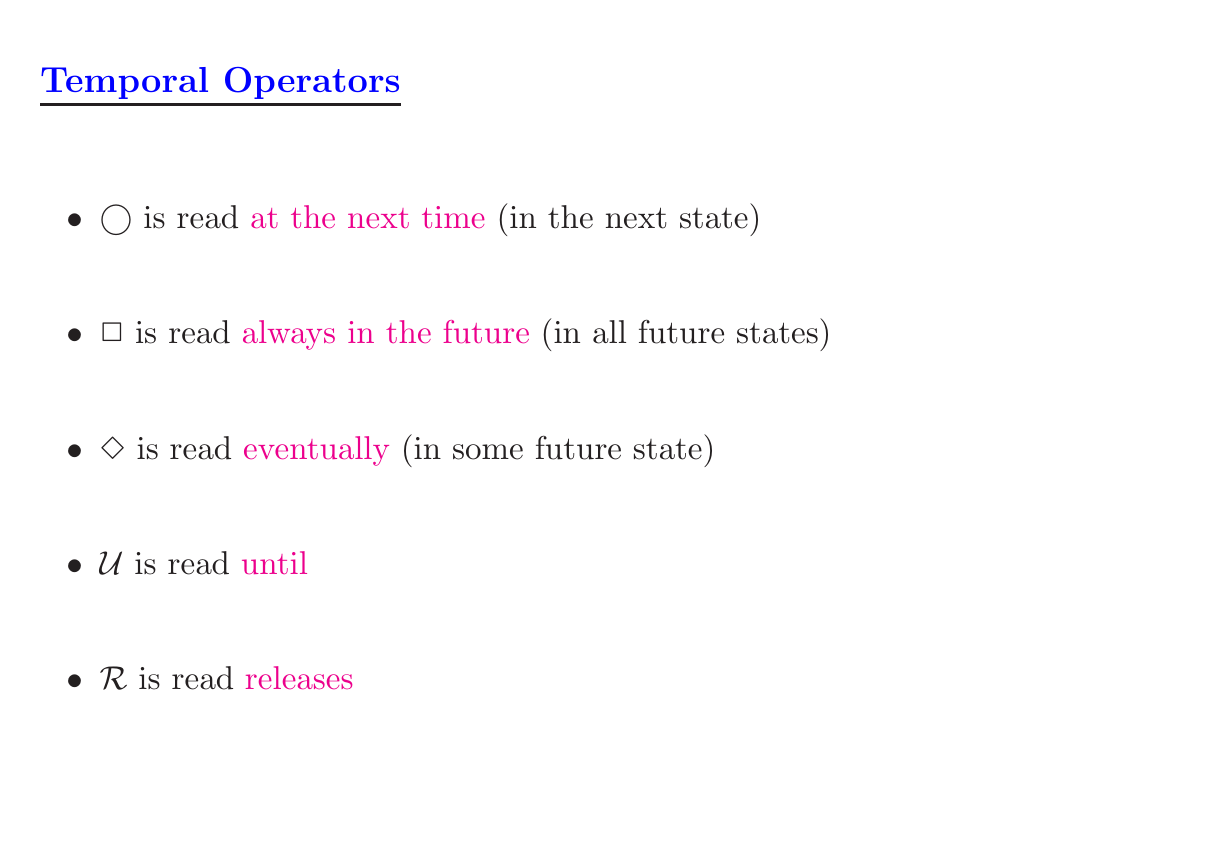








 2023年江西萍乡中考道德与法治真题及答案.doc
2023年江西萍乡中考道德与法治真题及答案.doc 2012年重庆南川中考生物真题及答案.doc
2012年重庆南川中考生物真题及答案.doc 2013年江西师范大学地理学综合及文艺理论基础考研真题.doc
2013年江西师范大学地理学综合及文艺理论基础考研真题.doc 2020年四川甘孜小升初语文真题及答案I卷.doc
2020年四川甘孜小升初语文真题及答案I卷.doc 2020年注册岩土工程师专业基础考试真题及答案.doc
2020年注册岩土工程师专业基础考试真题及答案.doc 2023-2024学年福建省厦门市九年级上学期数学月考试题及答案.doc
2023-2024学年福建省厦门市九年级上学期数学月考试题及答案.doc 2021-2022学年辽宁省沈阳市大东区九年级上学期语文期末试题及答案.doc
2021-2022学年辽宁省沈阳市大东区九年级上学期语文期末试题及答案.doc 2022-2023学年北京东城区初三第一学期物理期末试卷及答案.doc
2022-2023学年北京东城区初三第一学期物理期末试卷及答案.doc 2018上半年江西教师资格初中地理学科知识与教学能力真题及答案.doc
2018上半年江西教师资格初中地理学科知识与教学能力真题及答案.doc 2012年河北国家公务员申论考试真题及答案-省级.doc
2012年河北国家公务员申论考试真题及答案-省级.doc 2020-2021学年江苏省扬州市江都区邵樊片九年级上学期数学第一次质量检测试题及答案.doc
2020-2021学年江苏省扬州市江都区邵樊片九年级上学期数学第一次质量检测试题及答案.doc 2022下半年黑龙江教师资格证中学综合素质真题及答案.doc
2022下半年黑龙江教师资格证中学综合素质真题及答案.doc